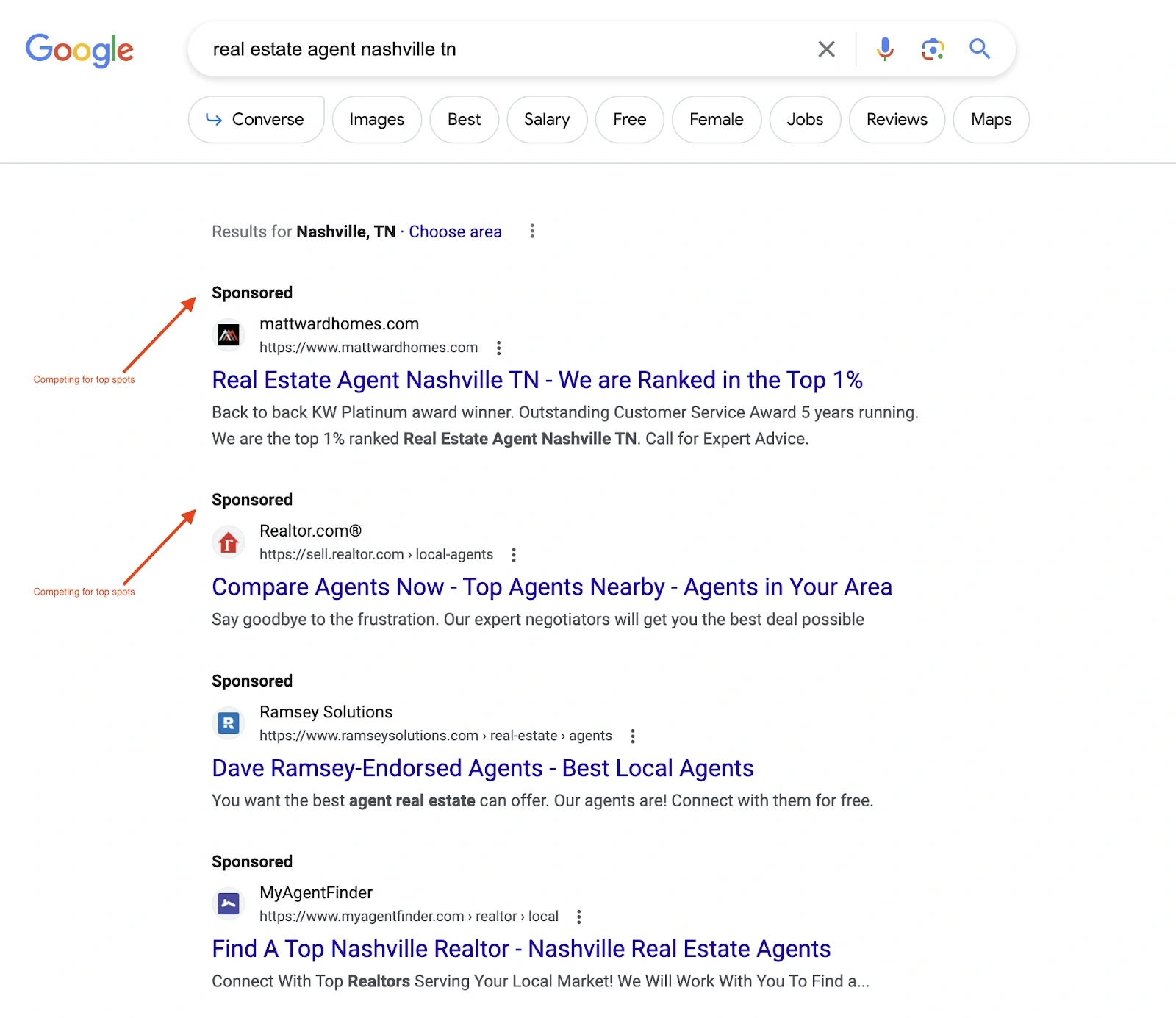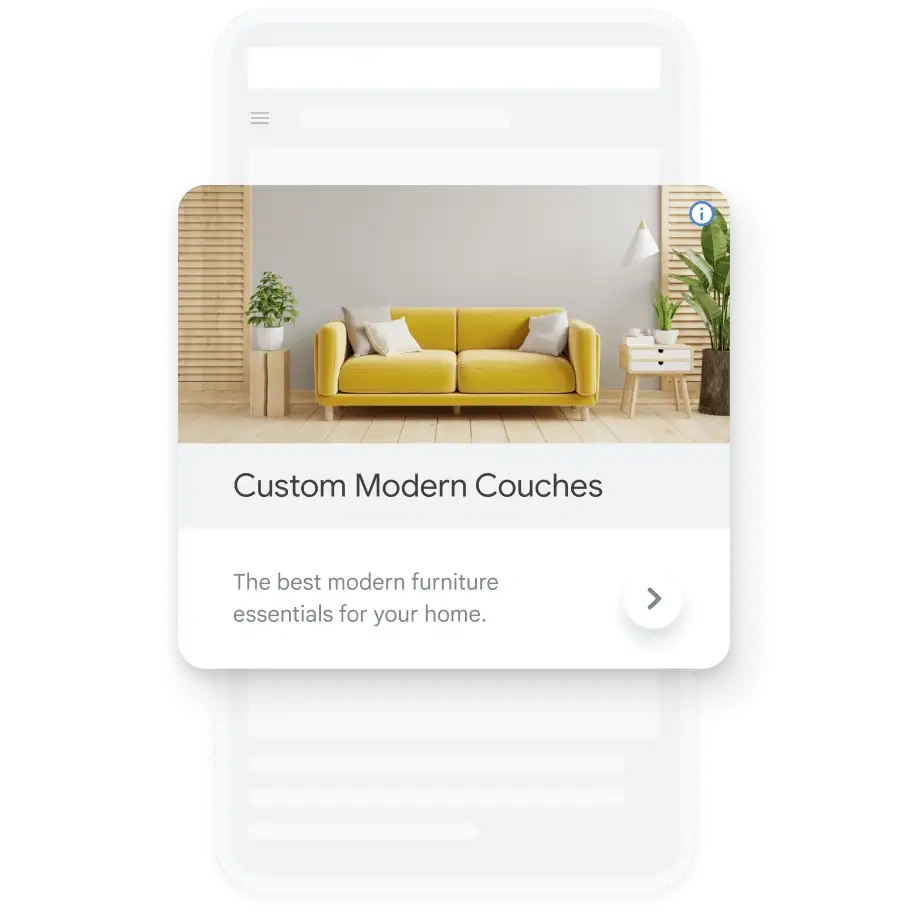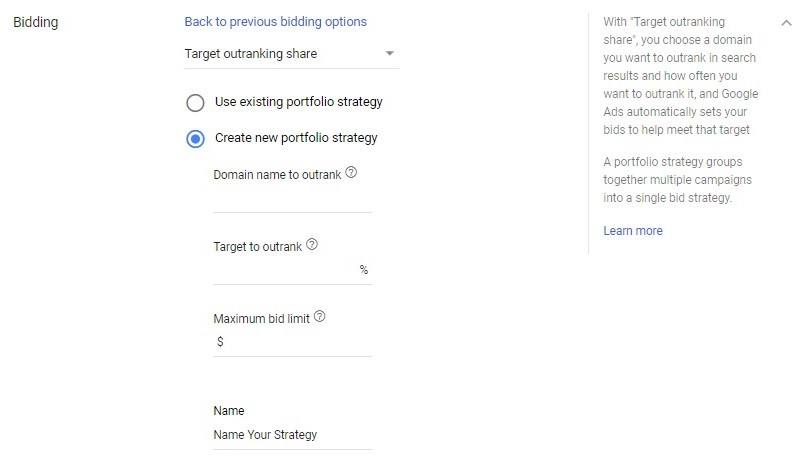
One of the most effective ways to drive traffic to your website is by setting up a digital advertising campaign. With the internet being one of the most widely used resources in the world, why not use it to your advantage to gain exposure and attract your audience?
Over the years, digital advertising has changed for the better. In particular, technology like artificial intelligence (AI) and machine learning has advanced digital advertising into the magic eight-ball known as programmatic advertising.
On top of that, automated bidding strategies make it easier to automate and optimize your ads to see your desired results. There’s no wonder why 80% of advertisers turn to using automated bidding.
In this article, we’ll explain everything you need to know about programmatic advertising and automated bidding strategies so you can reap the benefits of working smarter, not harder.
Let’s first cover what programmatic advertising is.
What is Programmatic Advertising?
Programmatic advertising is the process of using technology to automate digital ad campaigns. To understand this business process automation concept, it’s important to first touch on the basics of online advertising.
In previous years, advertisers ran their campaigns manually. Whenever they set up a campaign, they'd bid on their own keywords and had to optimize them accordingly to achieve suitable results.
Over time, the consequences of traditional digital advertising became apparent:
- The manual nature of digital advertising creates a higher barrier of entry only for highly-experienced advertisers.
- Losing money became a key issue for advertisers who had to wait until their campaigns launched to optimize them correctly based on key performance indicators (KPIs).
- Without setting up their campaigns with features like automated bidding, advertisers could easily accumulate expensive campaigns with little to show for it.
Because of this, programmatic ad buying was born. Specifically, Google Ads embraced this approach to help advertisers use cutting-edge technology to optimize their campaigns based on the goals they wanted to achieve.
Let’s break it down further.
Imagine you're on a website, watching videos, or playing a game on your computer or phone. You often see advertisements, right? These ads might be for toys, games, clothes, or anything brands want to sell.
Programmatic advertising is the way that these ads find their way to your screen.

Here's how it works, step by step:
- People want to advertise. Companies that want to sell something (like toys or clothes) want to show their ads to people who might buy them.
- Targeting the right people. They don't want to show their ads to just anyone. A toy company might want to show its ads to kids. And a clothing brand might want to show its ads to teenagers who are into fashion. So, they need a way to find the right people to show the ads to.
- Putting the ads in a marketplace. The companies put their ads into a big virtual marketplace. It's like an auction house where the ads are the items being sold.
- Your device sends information. When you go to a website or open an app, your computer or phone sends information about what you like and are interested in.
- The auction happens super fast. As the webpage or app loads, a super-fast auction happens (real-time bidding) in that virtual marketplace. Companies bid on the chance to show you their ad. The one that bids the most and matches what you might like gets to show you their advertisement.
- You see the ad. The ad that wins the auction is the one you see on the webpage or in the app. This programmatic buying all happens in a fraction of a second!
A programmatic advertising campaign is an incredibly speedy process that pairs ads with potential audiences. It helps you show your ads to the right people, and it's all done with computers and special algorithms (fancy math rules) that make it happen really quickly.
What is Automated Bidding?
What’s more, features like automated bidding became a popular alternative to manually configuring display ads and other types of ads to different audience segments.
Automated bidding is a Google Ads feature that sets automated bids for your ad group based on your set campaign goals and KPIs. Google sets these amounts automatically based on the likelihood that your audience will engage, click, and convert from your ads.
Some of the criteria for Google’s automated bidding amounts are:
- User operating system
- Demographics
- User device
- Location
Digital marketers have the choice to set up an automated bidding process across their ad groups, multiple campaigns, and keywords.
Ultimately, automated bidding helps advertisers fix two age-old campaign problems:
- Advertisers can stop worrying about whether their bids are too low to compete for qualified leads. Automated bidding takes care of all this.
- Advertisers can also stop worrying about whether their bids are high enough to show to wider audiences who may not be interested in their products or services.
Some programmatic advertising platforms offer bidding strategies designed specifically for local businesses.
The "local awareness" strategy focuses on reaching people within a certain radius of the business’ location. This can be useful for promoting in-store visits and local sales.
Don’s Flowers — a Lubbock florist with a local shop in Texas, uses this strategy to optimize their online orders for flower delivery.

But if the florist's primary goal was to drive physical store visits, some platforms offer another type of bidding, cost-per-visit (CPV) bidding. The CPV strategy optimizes bids to drive as many visits to the store within a set budget.
You just need to ensure location targeting is appropriately set up to target potential customers in your area — in this case, Lubbock, Texas. Set it and forget it. And you're off to the races, competing with the big dogs.
Before we get into configuring your programmatic ads with automated bidding, we need to go over one more term. And that’s smart bidding.
What is Smart Bidding?
There's definitely a correlation between automated bidding and smart bidding. However, they’re not interchangeable. Smart bidding is a category of automated bidding that refers only to conversion-based goals.
Here’s a simple flow chart that helps explain the difference between the two:

By analyzing all kinds of search data, smart bidding relies on machine learning to maximize the conversions of your campaign.
As a result, Google may increase or decrease your bids based on whether a particular engagement will lead to a conversion. For example, Google may set a higher bid for a lead who's more likely to make a purchase.
There are four smart bidding strategies you should take note of:
- Maximize Conversions
- Enhanced CPC
- Target ROAS
- Target CPA
Let’s use an example to break down this concept a bit more.
Programmatic advertising with automated bidding for real estate leads presents distinct differences from other industries. The real estate sector is fiercely competitive, demanding higher prices and aggressive bidding strategies to secure ad placements.
The longer sales cycle demands optimization to target potential buyers at various buying stages. Precise targeting is vital, considering location, property type (read: premium inventory), price range, and buyer demographics.
Seasonal trends and market fluctuations require a dynamic automated bidding strategy to capitalize on peak buying seasons and adjust bids during slower periods. Local and hyperlocal targeting is also crucial since real estate leads predominantly come from specific geographic areas.

Lead quality takes precedence over quantity (thanks to the high ticket price of purchasing a home), prompting the automated bidding system and real-time auctions to focus on attracting high-quality leads that are more likely to convert.
Effective programmatic campaigns for real estate involve optimizing not only ad creatives but also landing pages, providing essential property details and contact information.
This is how automated bidding works for real estate companies interested in getting real estate leads. With that example in mind, let’s dive into the nuts and bolts of why you clicked on this article.
How to Configure Programmatic Ads with Automated Bidding
Now that we’ve covered everything about programmatic advertising and automated bidding, let’s get into the strategies you need to follow to make your programmatic marketing campaign a success.
Note that everything related to automated bidding is done via Google Ads. Use it as your go-to ad management platform. You can add Google Ads automations to save time optimizing your best performing Google Ads.
With that, here are the different types of automated bidding strategies and how to optimize each of them.
Maximize Clicks
This automated bidding strategy is designed to maximize the total number of clicks your ads receive. The official goal for this setting is to increase website traffic.
Here’s what this setting looks like in Google Ads:

Advertisers can use this feature across a wide variety of campaigns, keywords, and ad groups. By doing so, Google will automatically set your bids so that you can achieve the most clicks that fit within your set budget.
This setting is best for companies that have an established conversion funnel on their website. If you’re confident in the potency of your landing page, marketing content, and sales team, you can select this feature.
Unlike the other automated bidding strategies, the most important metric here's ad visibility. In other settings, clicks would be considered a vanity metric.
Target Search Page Location
This automated bidding strategy is a pretty unique one. It’s designed to help your ads rank at the top of Google’s paid search results.
Here’s how it looks in Google Ads:

You can only use this strategy across different campaigns. If your goal is simply to gain more online exposure, this may be the best strategy for you.
If you want to stand out even more than the competition, using this specific strategy, incorporating eye-catching visual ads is crucial to capture your target audience's attention.
With Picsart's user-friendly platform, you can design posters with templates for a quick and efficient way to create visually stunning ads.

Target Outranking Share
This automated bidding strategy helps advertisers outrank their competitors in Google’s paid search results.

When you select this option, all you have to do is select your competitors’ domain, and Google will set up your ads to outrank theirs.
The only caveat is that this option is only available as a portfolio bid strategy.
Target Cost-Per-Acquisition (CPA)
The goal for this bidding option is to generate as many conversions as possible with your target CPA.

While some conversions can go over or lower your CPA with automated bidding, Google Ads will give you a broad idea of the success you can achieve with your specified budget.
Running these bidding strategies does run the risk of costing more than your budget in the long run. For this reason, you should only use this option if you’re certain with a set CPA that can convert a customer and stay within your budget.
Maximize Conversions
This automated bidding strategy is designed to help advertisers convert a large number of prospects for a price that’s within their budget.

Unlike the previous option, Google will use your entire budget to convert as many prospects as possible. The goal here is to increase conversion volume, and it’s available as a basic strategy for individual campaigns.
Therefore, if you have a large budget and want to place your ad campaign on autopilot to focus on conversions, this is an ideal option.
Final Words
As you can see, automated bidding strategies help take the busy work out of creating high-performance programmatic ads.
Using any of the features above depends on your budget, goals, and overall experience level with Google Ads. But by trying out a few of these options, you can conquer this programmatic advertising process the first time around. So set your strategy, and watch your campaign bring in results.
But if you’re still unsure where you want to funnel your advertising budget and want to start on the right foot, you can always consult with a Google Ads expert. It never hurts if you’re new to the game, to consult the experts for the best results. Happy advertising!



